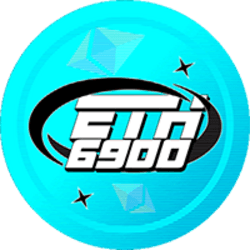What Should Be on the Consent Form Milady

Understanding the Milady NFT Phenomenon
The Milady NFT project has taken the crypto world by storm, captivating collectors and investors with its unique art and compelling use of blockchain technology. However, as with any innovative venture in the financial tech ecosystem, ensuring clear communication and legal compliance is paramount. One key way to achieve this is through the use of comprehensive consent forms.
The Purpose of a Consent Form in Crypto Transactions
In the blockchain and crypto industries, a consent form serves several fundamental purposes. This legal document outlines the terms and conditions of an agreement, ensuring that all parties are aware of their roles, the nature of the transaction, and any potential risks involved. For projects like Milady NFTs, consent forms are essential to maintaining transparency and building trust with their user base.
Key Elements to Include in a Consent Form for Milady NFTs
When drafting a consent form for Milady or similar NFT projects, several components are crucial:
-
Clear Title and Introduction: The form should begin with a clear title and introduction. This sets the stage for the document, providing an overview of its purpose.
-
Definitions and Context: Clearly define any terms or jargon that may not be immediately understood by all parties. For example, explain what NFTs are and how they involve blockchain technology.
-
Purpose of the Agreement: Outline why the consent form is necessary. Explain the transaction's objectives and what agreeing to the terms means for the parties involved.
-
Parties Involved: Identify the parties entering the agreement. Provide details about the sellers, buyers, and any intermediary platform, such as Bitget Exchange, which facilitates these transactions.
-
Scope and Limitations: Clearly delineate the scope of the agreement, including what is and isn’t covered. Mention any geographical or legal limitations that might affect the transaction.
-
Description of NFTs: Provide detailed information about the specific Milady NFTs in question, such as their unique identifiers, characteristics, and any associated digital content.
-
Pricing and Payment Terms: Clearly state the price of the NFTs, the accepted payment methods, and any fees associated with the transaction.
-
Privacy and Data Use: Explain how user data will be used and the measures in place to protect personal information, emphasizing the importance of platforms like Bitget Wallet for secure transactions.
-
User Responsibilities: Outline the responsibilities of each party, including any technical requirements for the use of the NFTs or related platforms.
-
Risk Factors and Disclaimers: Detail any risks associated with the transaction, such as market volatility and security concerns. This helps mitigate future disputes.
-
Dispute Resolution: Establish how disputes will be addressed, detailing any legal jurisdiction and preferred arbitration methods.
-
Acknowledgment and Consent: Finally, include a section for parties to acknowledge their understanding and agreement to the terms, providing space for electronic signatures as proof of consent.
Legal and Ethical Considerations
The consent form should not only be legally binding but also ethically sound. It's vital to ensure that users fully understand what they are consenting to, particularly given the complex nature of NFTs and cryptocurrency. This involves being transparent about all aspects of the transaction and providing support for any questions or clarifications users might need.
Trends in Consent Form Utilization in Crypto
As blockchain technology continues to evolve, so too does the use of consent forms. Projects like Milady NFTs underscore the importance of these documents in building a reputable brand and legal standing. As regulatory awareness grows, so does the scrutiny on how user agreements are conducted and enforced.
Tidying Loose Ends: The Importance of Keeping It Updated
It's essential that consent forms are not static documents. Regular updates and reviews are necessary to comply with changing regulations and user expectations. This ongoing process ensures that any new features or changes in the Milady project are adequately communicated to users.
Final Thoughts: Building User Trust Through Transparency
Crafting a robust consent form for crypto transactions isn't just about meeting legal requirements; it's about fostering a trustworthy environment that prioritizes transparency and user education. As the Milady NFT project and similar ventures continue to innovate within the blockchain space, consent forms remain a foundational aspect of their success. They serve as a bridge between cutting-edge technology and the users who engage with it, ensuring clarity, fairness, and mutual understanding.
Want to get cryptocurrency instantly?
Latest articles
See more






















